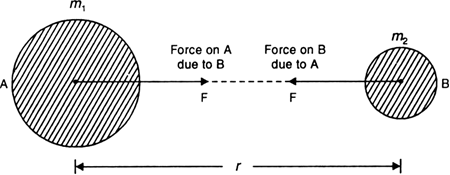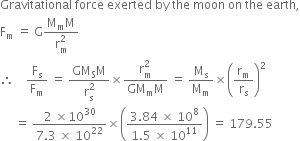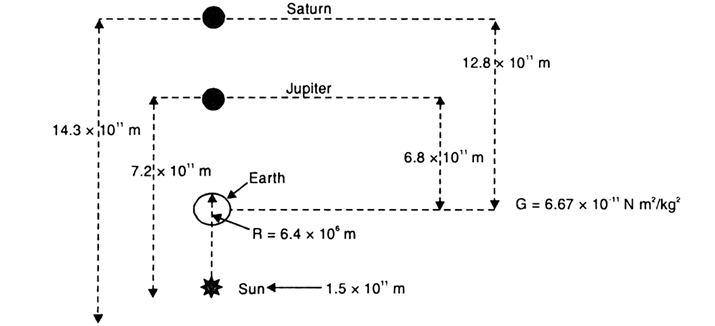How did Newton guess the inverse square rule obeyed by the gravitational force?
Newton used Kepler's third law of planetary motion to guess how the force of gravitation of the earth is weakened by distance. Suppose a planet revolves around the sun in a circular orbit of radius r with speed v, then the force acting on the planet is given by

If T is the period of revolution of the planet around the sun, then its orbital velocity will be

This is inverse-square rule for the force of gravitation. According to this rule, the force of gravitation on a planet should decrease as the square of the distance of the planet from the sun.
Newton further showed that the gravitational force is proportional to the product of the masses of the two objects. Thus, Newton formulated the universal law of gravitation.
State Newton's universal law of gravitation. Hence define universal gravitational constant. Give the value of G.
Newton's universal law of gravitation. This law states that everybody in this universe attracts every other body with a force which is directly proportional to the product of their masses and inversely proportional to the square of the distance between them. The direction of the force is along the line joining the centres of two bodies.

Fig. 10.6. Law of gravitation.
As shown in Fig. 10.6, consider two bodies A and B of masses mx and m2. Let r be the distance between their centres. If F is the force with which the two bodies attract each other, then according to the law of gravitation,

where G is a proportionality constant, called universal gravitational constant. Definition of G. If in the above equation, we take, ml = m2 = 1 unit and r = 1 unit, then F = G.
So, universal gravitational constant may be defined as the force of gravitational attraction between two bodies of unit mass each placed unit distance apart.
The mass of the earth is 6 x 1024 kg and that of the moon is 7.4 x 1022 kg. If the distance between the earth and the moon be 3.84 x 105 km, calculate the force exerted by the earth on the moon. The value of G = 6.7 x 10–11 Nm2 kg–2.

Compare the gravitational forces exerted by the sun and the moon on the earth. Which exerts a greater force and by how many times?


Suppose that the two giant planets of the solar system, Jupiter and Saturn, are in the same line as seen from the earth. It happens occasionally that some planets appear in the same line from the earth. Find the total gravitational force due to them on a person of mass 50 kg on the earth. Compare this with the force of gravity on the same person. Could the force due to planets be important?

